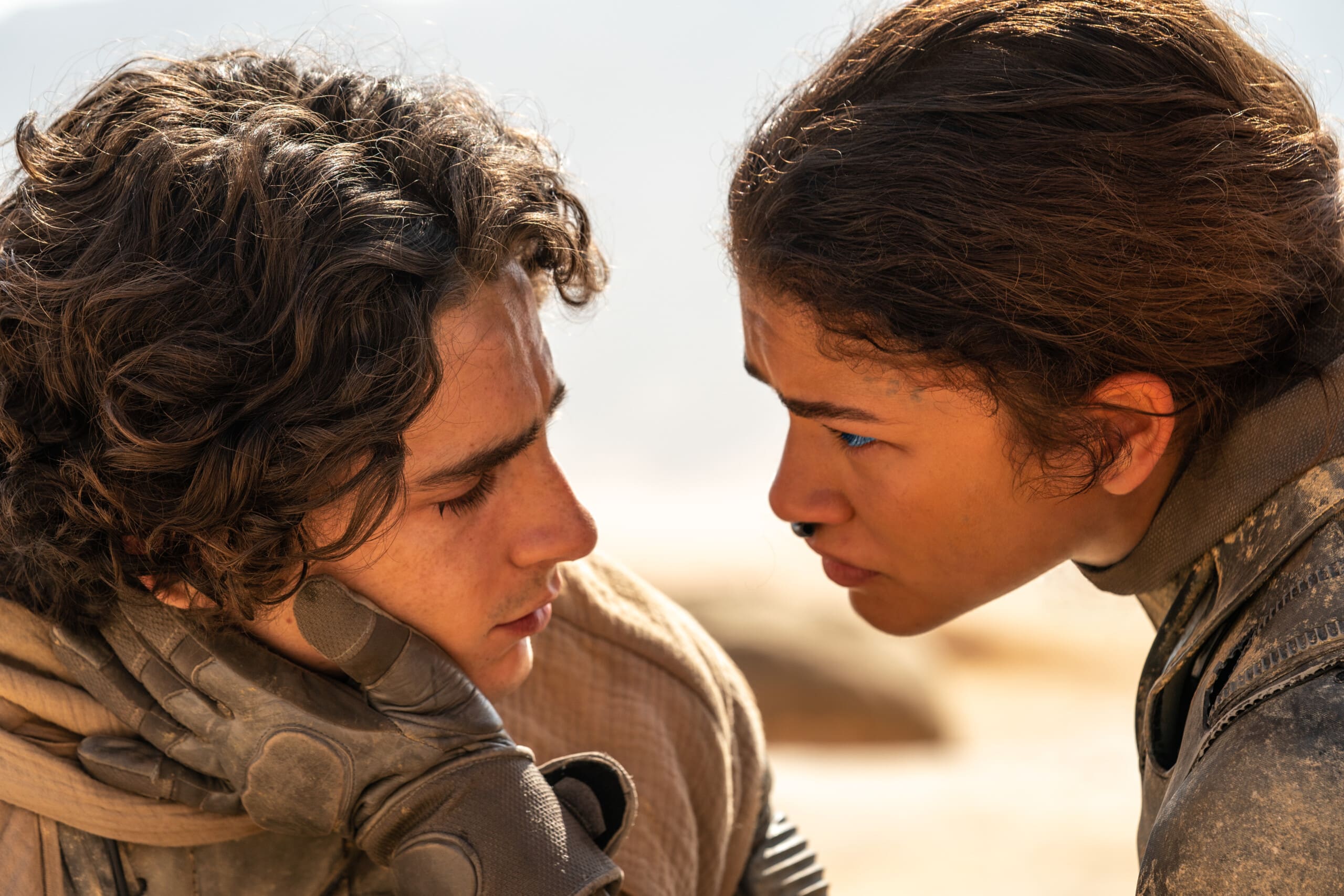Written by Veda Kota
The world last heard of House Atreides in 2021, when director Denis Villeneuve released Dune: Part 1 to widespread success and critical acclaim. While a bit slow due to its expositional nature, given how expansive Frank Herbert’s original universe was, the slower pace was necessary. However, the first film’s conclusion left fans with one big question: with Duke Leo Atreides (Oscar Isaac) dead, Paul (Timothée Chalamet) broken, and the universe in shambles, how would Villeneuve and the cast build upon the excitement the first film generated? Simple: make a film that is better than the first in every conceivable way. Dune: Part Two is a cinematic tour-de-force, a larger-than-life piece of cinema that reminds audiences of what film truly is capable of.
Dune: Part Two follows the now-fatherless Paul Atreides after he decides to live with the Fremen and wrestles with his destiny—much to the chagrin of his mother, Lady Jessica (Rebecca Ferguson). While Princess Irulan (Florence Pugh) believes Paul and Jessica to still be alive, House Harkonnen believes that they were killed as they flew into the storm during the last film, only intensifying their attack on the Fremen. Several extremely well-thought-out battle sequences ensue, with the Fremen making use of their limited resources and newfound determination due to some (including Stilgar, played by Javier Bardem) believing that Paul is the Lisan al-Ghaib, or the messiah. Others still express skepticism towards Paul, believing him to be a spy.
Dune: Part 1 focused much more on “space politics”, establishing control of spice as a means of power and meticulously detailing the complex political relationships between each house while centering the narrative on Paul. Dune: Part Two is far more expansive in comparison. The film explores religious fanaticism, the idea of cultural appreciation vs. appropriation through figures like Lady Jessica, and a deeper exploration of Paul’s character as he’s consistently influenced by those around him. Dune: Part Two is more of the revolutionary story viewers were expecting, with (upon first glance) a significant portion of the movie displaying the realities of battle. The opening scene alone, when the Harkonnen descend onto Arrakis in their suits, starts off the movie with a literal bang.
The visual and musical direction in Dune: Part Two is a massive step up from the first film. Oscar-winning cinematographer Greig Fraser returns, delivering more stunning and memorable shots than before. The desert is shown to be an even more uncaring creature than in the first film, with the audience feeling like they’re physically in Arrakis. Giedi Prime, home of House Harkonnen, is displayed in a colder and more ruthless manner, the black-and-white contrast is even sharper. The visual effects, like the negative fireworks on Giedi Prime, only add to the cinematic universe, immersing the viewers into the world. Hans Zimmer returns to score Dune: Part Two, this time with notable changes. As the film divides itself between several settings, Zimmer comforts the audience with familiar leitmotifs to musically convey each setting and character. Dune: Part Two’s technical elements feel more cohesive, bringing everything together into one large spectacle.
Despite his sometimes flat and lackluster performance in the first film, Chalamet redeems himself as the franchise’s anti-hero. He delivers his lines as the messiah with increasing confidence as the film progresses, with some of his final lines among his career best. Zendaya brings far more to Chani than the script demands, displaying all the petulance and frustration a scorned lover and revolutionary should. There’s a bit more chemistry between the two, displayed more in honeyed glances and small gestures than words, which helps put Paul’s mindset into perspective.
However, the film’s real standouts are Ferguson, Javier Bardem as Stilgar, and Butler as Feyd-Rautha. Ferguson displays incredible acting prowess as she Jessica slowly manipulates Paul and the Fremen with her undeniable influence. It is her physical acting, conveyed in rigid glares, meditative gestures, and watchful eyes, that truly sends home the film’s message. Bardem assumes the role of the hopeful and wise Fremen leader, delivering perfectly-timed snark when the film needs it. The audience witnesses the slow yet organic development as Stilgar goes from a level-headed guiding figure to one of Paul’s many devotees. Butler fully convinces the audience that he is Feyd-Rautha. His physicality overshadows his line delivery, displaying all the sociopathy necessary to play a villain so cartoonishly psychotic.
While Villeneuve takes some creative liberties, it ultimately, feels right. When adapting a universe as large and expansive as Herbert’s, jamming every possible element into what is already a behemoth of a franchise (Dune: Part Two’s runtime is 2 hours and 46 minutes) would have made cluttered the film unnecessarily. Villeneuve and co-writer Jon Spaihts’ choices to leave out certain characters and settings allow the film to explore those they do include more deeply.
The result is a film that looks at the dazzling depths of human greed, betrayal and hope. The film pulls no punches, keeping the audience seated for an almost three-hour rollercoaster ride. With its rich cinematic elements, incredibly immersive score, impressive performances, and deft maneuvering of themes, Dune: Part Two is the perfect sequel and just what the franchise needed. It will be exciting to see how Villeneuve and his team build upon this massive success, as it’s almost impossible to imagine something more massive than this. However, I eagerly anticipate how the remaining films will adapt Paul’s journey, or worse, his downfall.


